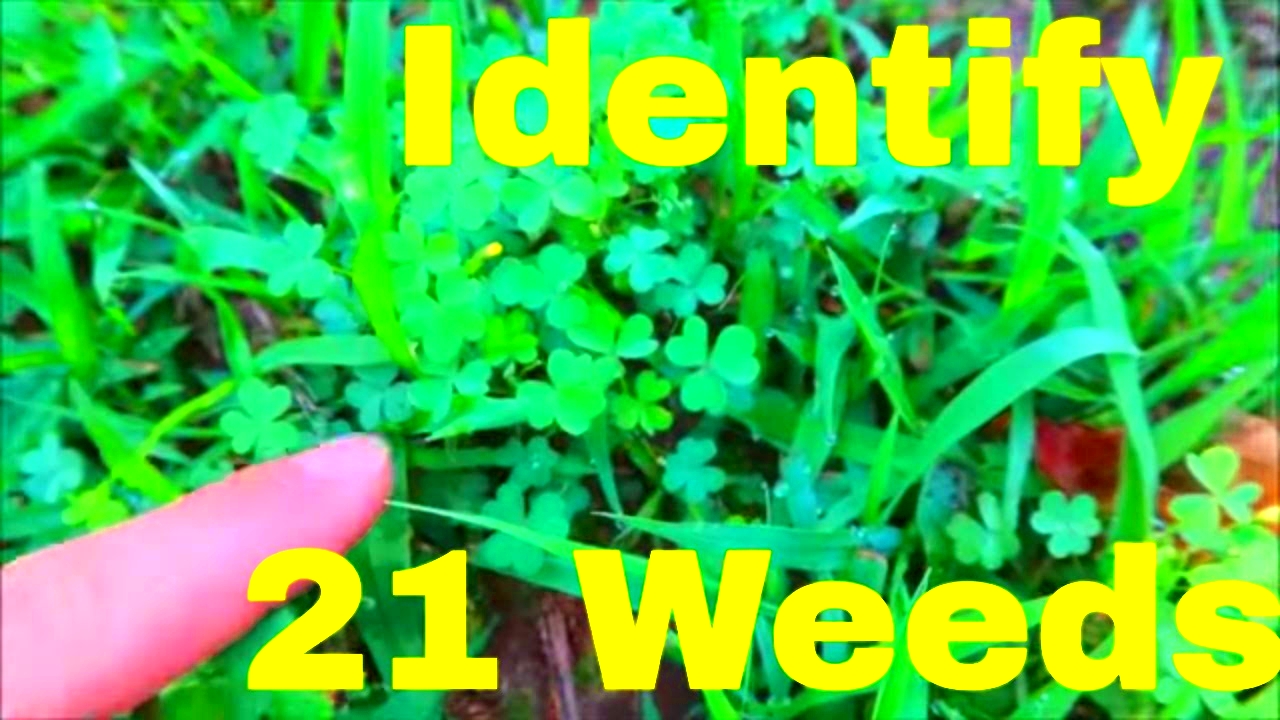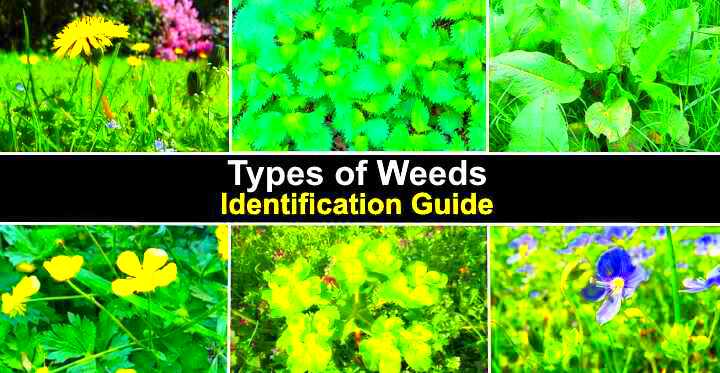Unveiling weeds can often be a daunting task, especially considering the variety of terrains found in Northeast America. Weeds tend to sprout where you least want them, robbing your garden crops of essential nutrients, moisture, and sunlight.This article will provide photographic identification of common weeds, along with guidance on accurate identification and reasons why these plants are a nuisance to gardeners. Understanding the prevalent weeds in your area is an important first step toward successful management and control.
Common Weeds Found in Northeast USA

Often, in the Northeast, several weeds sprout forth in garden beds and on lawns. Below are among the topmost common weeds:
- Dandelion (Taraxacum officinale) - Known for its bright yellow flowers and jagged leaves.
- Crabgrass (Digitaria spp.) - A coarse grass that often appears in lawns during summer.
- Plantain (Plantago major) - Has broad leaves and can tolerate a variety of soil conditions.
- Chickweed (Stellaria media) - A low-growing plant with small white flowers.
- Bindweed (Convolvulus arvensis) - A vine that wraps around other plants, making it hard to remove.
Knowing these weeds from early on will help you reduce your effort and time taken to keep your garden.
How to Use Photos for Weed Identification
It is a practical approach that is beneficial to many gardeners to identify weeds using
images. The following are some steps on how to use this method well:
- Take Clear Photos: Capture multiple angles of the weed. Ensure good lighting and focus on details like leaves, stems, and flowers.
- Compare with Reference Images: Use online resources or gardening books that provide clear images of common weeds. Websites and apps dedicated to plant identification can be particularly useful.
- Note Distinctive Features: Pay attention to characteristics such as leaf shape, flower color, and growth habit. For example, dandelions have a rosette shape while crabgrass spreads horizontally.
- Join Online Communities: Share your photos with gardening groups on social media. Often, experienced gardeners can help you identify the weed.
Is there any way I can send you the photos for identification?
Characteristics of Weeds to Look For
The process of identifying weeds can be made easier if one understands their characteristics. Some common characteristics among weeds differentiate them from the plants you want. You should look out for the following:
- Leaf Shape and Size: Weeds can have a variety of leaf shapes, such as broad, narrow, or jagged. For instance, dandelions have a unique lobed shape, while purslane has thick, fleshy leaves.
- Growth Habit: Weeds often grow aggressively and can spread quickly. They may grow upright or spread out along the ground, like crabgrass.
- Flowers: Many weeds produce small, colorful flowers that can attract pollinators. For example, the yellow blooms of buttercups are quite recognizable.
- Root System: Weeds often have deep or extensive root systems that allow them to absorb nutrients and water more effectively than garden plants. This makes them tough to remove completely.
- Seed Production: Weeds tend to produce a high number of seeds, which helps them spread rapidly. Knowing how many seeds a weed can produce is key to understanding its potential impact.
Recognizing the aforementioned characteristics will enable you to distinguish and control weeds in your garden effectively.
Resources for Weed Identification
It can be hard to identify weeds correctly; nevertheless, many resources exist to aid you. Here are some helpful references and instruments:
- Plant Identification Apps: Apps like PlantSnap or PictureThis allow you to take a photo of the weed and get instant identification.
- Gardening Websites: Websites such as the USDA Plant Database and local extension services provide detailed information and images of common weeds.
- Books: Investing in a good field guide for plants in your region can be invaluable. Look for guides specifically about weeds in the Northeast USA.
- Social Media Groups: Join gardening groups on platforms like Facebook or Reddit. You can ask for help identifying weeds and learn from the experiences of others.
- Local Extension Offices: Many states have agricultural extension services that offer resources and workshops for gardeners. They can provide information tailored to your specific region.
Soils harbour limitless hidden treasures according to the ominous saying echoed by various ideologies. With appropriate materials, one can solve various problems concerning marijuana and other products grown on similar types of land.
Tips for Accurate Identification of Weeds
For successful control, precise weed determination is crucial. Here are some hints to assist you on your journey:
- Observe Multiple Features: Don’t rely on just one characteristic. Look at the leaves, flowers, stems, and overall growth habit to form a complete picture.
- Check the Season: Some weeds look different depending on the season. For example, certain plants may flower in the summer but look quite different in the spring.
- Use a Guide: Having a reliable plant identification guide can be a game changer. Make sure to choose one that covers the specific region of the Northeast USA.
- Take Notes: When you identify a weed, jot down its key features and take photos. This will help you recognize it in the future and keep track of its growth.
- Consult Experts: Don’t hesitate to reach out to local horticulturists or garden centers. They can often provide insights and identify weeds you might be struggling with.
If you use these advice, your abilities in identifying the various types of weed will increase, thereby helping you to control the undesirable plants in your garden smoothly.
How to Manage and Control Weeds
Weed control and management is a vital issue in having a healthy lawn or a yard. Since weeds are in constant competition with the desired plants for food and other resources, it becomes more essential to act. Some of the competent methods that you can use include the following:
- Mulching: Applying a thick layer of mulch around your plants can smother weeds by blocking sunlight. Organic mulches, like wood chips or straw, also improve soil quality as they decompose.
- Hand Pulling: For small infestations, hand pulling can be effective. Make sure to pull the entire root out to prevent regrowth. It’s best to do this after a rain when the soil is moist.
- Weed Barriers: Landscape fabric or cardboard can act as a barrier, preventing weeds from reaching sunlight. Just remember to cut holes for your plants!
- Proper Mowing: Keeping your lawn at the right height can help it outcompete weeds. Taller grass shades the soil, making it harder for weed seeds to germinate.
- Herbicides: If the weed problem is severe, you might consider using herbicides. Be sure to choose one that targets specific weeds without harming your other plants. Always follow the instructions carefully.
Using these techniques, you can successfully monitor and handle weeds in your garden ensuring that the plants remain in good condition and grow well.
FAQ about Identifying Weeds
There are always doubts when we want to know how to identify weeds. Below are commonly asked queries which might help in clarifying this procedure:
What is the easiest way to identify weeds?
- Using photos of the weeds along with reliable plant identification apps or guides can significantly simplify the process.
Can I identify weeds by their roots?
- Yes, observing the root structure can help with identification. Different weeds have distinct root types, which can be a clue.
Are there harmful weeds I should be cautious about?
- Yes, some weeds can be toxic or invasive. Examples include poison ivy and Japanese knotweed. Always do your research if you suspect a weed may be harmful.
How can I prevent weeds from coming back?
- Consistent management and control practices, like mulching and proper lawn care, can help prevent weeds from returning.
Is there a specific time of year when weeds are easier to identify?
- Yes, spring and early summer are usually the best times for identification since many plants are flowering during this period.
As you aim to properly identify and control weeds, these explanations should be of help to you.
Conclusion on Weed Identification in Northeast USA
Finally yet importantly, detecting weeds in northeast American territories is an important ability for every garden keeper. With sufficient knowledge and materials at hand, one can easily identify and control some of the notorious weeds that intrude into here. While focusing on main features, arranging useful sources and using appropriate ways of doing away with them this way a better surrounding will be created in gardens.Keep this into consideration; for one to get the most out of their garden they should understand their local ecosystem. Knowing which plants grow well together in your area will enable you to make the right choices. Hands-on weed removal, application of mulch or any other little action counts when it comes to your gardening habits. Take time to learn how to identify and manage weeds in order to enjoy your garden’s beauty!
 Often, in the Northeast, several weeds sprout forth in garden beds and on lawns. Below are among the topmost common weeds:
Often, in the Northeast, several weeds sprout forth in garden beds and on lawns. Below are among the topmost common weeds:
 admin
admin








